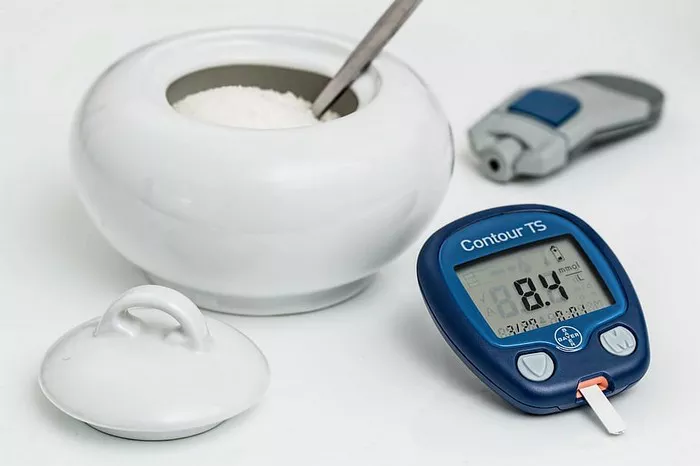Understanding HbA1c
Hemoglobin A1c (HbA1c) is a critical measure in diabetes management. It reflects the average blood glucose levels over the past two to three months by measuring the percentage of glucose bound to hemoglobin in the blood. Unlike daily blood sugar tests, which provide a snapshot, HbA1c offers a long-term perspective on glucose control, making it an invaluable tool for clinicians and patients alike.
The Significance of HbA1c in Diabetes Management
For individuals with diabetes, maintaining an optimal HbA1c level is crucial to prevent complications. Persistent high blood glucose levels can lead to various complications, including cardiovascular disease, neuropathy, nephropathy, retinopathy, and an increased risk of infections. Conversely, too low HbA1c levels can indicate hypoglycemia, which can also have severe consequences, including cognitive impairment and increased mortality in severe cases.
What is the Best A1c Number?
Balancing Tight Control with Safety
The optimal HbA1c target is a balancing act between minimizing the risk of complications from hyperglycemia and avoiding the dangers of hypoglycemia. According to the American Diabetes Association (ADA), a general target HbA1c for most adults with diabetes is less than 7%. However, this target may be adjusted based on individual patient factors such as age, duration of diabetes, comorbid conditions, and risk of hypoglycemia.
Personalized HbA1c Targets
Young and Healthy Adults
For younger individuals with a recent diagnosis of type 1 or type 2 diabetes, with no significant comorbidities, an HbA1c target closer to normal levels (6.0-6.5%) might be recommended. These individuals can often tolerate tighter glucose control and benefit from the reduced risk of long-term complications.
Older Adults and Those with Comorbidities
For older adults or those with multiple comorbid conditions, a more relaxed HbA1c target of 7.5-8.0% may be appropriate. The risk of hypoglycemia increases with age and the presence of other medical conditions, and the potential harms of aggressive glucose lowering may outweigh the benefits in these populations.
Pregnancy
Pregnant women with diabetes have unique targets to ensure both maternal and fetal health. The ADA recommends an HbA1c target of less than 6.0-6.5% for women planning pregnancy and during pregnancy, reflecting the need for tight control to reduce the risk of congenital anomalies, preterm delivery, and other complications.
Patients with a History of Severe Hypoglycemia
For patients who have experienced severe hypoglycemia or have hypoglycemia unawareness, a higher target of around 7.5% might be more appropriate. This adjustment helps prevent recurrent hypoglycemic episodes that can be life-threatening.
Evidence from Clinical Trials
Several landmark studies provide insights into optimal HbA1c targets:
The DCCT and EDIC Studies
The Diabetes Control and Complications Trial (DCCT) and its follow-up, the Epidemiology of Diabetes Interventions and Complications (EDIC) study, demonstrated that intensive glucose control (mean HbA1c ~7%) in patients with type 1 diabetes significantly reduced the risk of microvascular complications and had a lasting impact on reducing cardiovascular events.
The UKPDS
The United Kingdom Prospective Diabetes Study (UKPDS) for type 2 diabetes found that intensive glucose control (mean HbA1c ~7%) reduced microvascular complications. However, the benefits for macrovascular outcomes were less clear, emphasizing the need for individualized targets based on patient risk profiles.
The ACCORD, ADVANCE, and VADT Trials
These trials evaluated the effects of intensive glucose control in older adults with type 2 diabetes and existing cardiovascular disease or risk factors. The ACCORD study was halted early due to an increased mortality rate in the intensive control group (target HbA1c <6%). The ADVANCE and VADT trials showed no significant reduction in macrovascular events but did confirm the benefits in reducing microvascular complications.
Setting Realistic and Safe HbA1c Targets
When determining the best HbA1c target for a patient, several factors must be considered:
Duration of Diabetes
Patients with a longer duration of diabetes may have established complications and reduced β-cell function, making stringent glucose control more challenging and risky. For these individuals, a target HbA1c closer to 7-8% may be more appropriate.
Life Expectancy
In patients with limited life expectancy, the focus shifts from long-term prevention to quality of life and symptom management. Thus, less stringent HbA1c targets can be justified.
Cognitive Function
Cognitive impairment can affect a patient’s ability to manage diabetes effectively, increasing the risk of hypoglycemia. Therefore, more relaxed targets (7.5-8%) are often safer.
Hypoglycemia Risk
Frequent or severe hypoglycemia episodes warrant higher HbA1c targets to avoid life-threatening events and ensure patient safety.
The Role of Continuous Glucose Monitoring (CGM)
Continuous glucose monitoring (CGM) technology has revolutionized diabetes care, offering real-time glucose readings and trends. CGM provides additional metrics such as time in range (TIR), glycemic variability, and hypoglycemia episodes, which complement HbA1c by providing a more comprehensive picture of glucose control.
Integrating CGM Data with HbA1c
While HbA1c remains a cornerstone of diabetes management, CGM data allows for a more nuanced approach. For instance, a patient with an HbA1c of 7% but frequent hypoglycemia may need a different treatment strategy than one with stable glucose levels. CGM helps identify patterns and trends that can inform adjustments in therapy to improve both safety and efficacy.
Strategies to Achieve Optimal HbA1c
Lifestyle Modifications
Diet
A balanced diet low in refined sugars and high in fiber, healthy fats, and lean proteins helps maintain stable blood glucose levels. Individualized meal planning and carbohydrate counting are essential components.
Exercise
Regular physical activity enhances insulin sensitivity and glucose uptake by muscles. Patients should aim for at least 150 minutes of moderate-intensity exercise per week.
Pharmacologic Interventions
Insulin Therapy
For type 1 diabetes and some cases of type 2 diabetes, insulin therapy is essential. Adjusting the type, timing, and dose of insulin based on blood glucose patterns is key to achieving target HbA1c levels.
Oral Medications
Metformin, sulfonylureas, DPP-4 inhibitors, SGLT2 inhibitors, and other oral agents can be tailored to individual needs. Combining medications may offer better glucose control with fewer side effects.
Non-Insulin Injectables
GLP-1 receptor agonists and amylin analogs provide additional options for managing blood glucose and reducing HbA1c.
Patient Education and Support
Empowering patients with knowledge about diabetes management is crucial. Regular education on self-monitoring of blood glucose, recognizing symptoms of hypo- and hyperglycemia, and understanding the impact of diet and exercise can significantly improve outcomes.
Regular Monitoring and Follow-Up
Consistent follow-up appointments allow for the adjustment of treatment plans based on the latest HbA1c results, patient-reported outcomes, and any new health developments. Regular screening for diabetes complications ensures timely intervention and management.
Future Directions in HbA1c Management
Precision Medicine
Advancements in genomics and personalized medicine promise more tailored approaches to diabetes management. Genetic profiling may help predict individual responses to different therapies, allowing for more precise HbA1c targets and treatment plans.
Technological Innovations
The integration of artificial intelligence and machine learning with CGM data could enhance predictive analytics, enabling proactive adjustments in therapy to maintain optimal HbA1c levels and improve patient outcomes.
New Therapeutic Agents
Ongoing research into novel diabetes medications, including those targeting different aspects of glucose metabolism and inflammation, holds the potential to offer more effective and safer ways to achieve optimal HbA1c levels.
Conclusion
The best HbA1c target is not a one-size-fits-all number. It requires a personalized approach considering the patient’s age, duration of diabetes, comorbidities, risk of hypoglycemia, and lifestyle. The general recommendation for most adults is an HbA1c below 7%, but this should be adjusted based on individual circumstances. Continuous glucose monitoring and regular follow-ups are integral to achieving and maintaining optimal HbA1c levels. As diabetes management continues to evolve with technological and therapeutic advancements, personalized targets and strategies will become increasingly precise, improving outcomes and quality of life for people with diabetes.
Related topics:
What Is Normal Glucose Level In The Blood?























